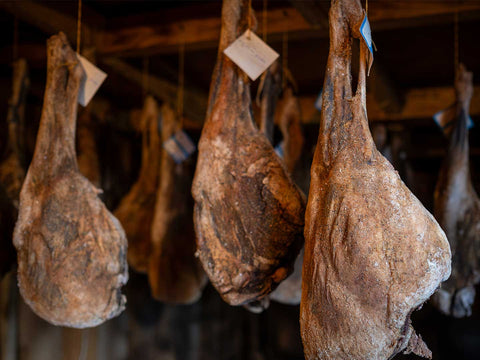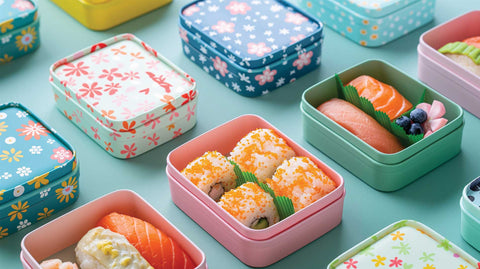Food preservation techniques have ancient roots dating back thousands of years, with evidence suggesting practices as early as 12,000 BC. During this time, early humans relied on simple methods to preserve food. But what was once done primarily to prolong a food’s shelf life has now evolved into an art form.
From curing, salting, and drying, we explore how these food preservations have evolved and the iconic gourmet products they have birthed.
Drying
One of the earliest forms of food preservation was drying. Ancient civilizations would sun-dry or air-dry foods such as meat, fruits, and grains to remove moisture and inhibit the growth of bacteria and mold. These dried foods could then be stored for extended periods without spoiling.
Some of these traditions have been practiced for centuries, such as in the Middle East and North Africa, where, despite the availability of modern drying technologies, producers still prefer age-old methods for their simplicity and effectiveness when it comes to preserving natural flavor.
One special ancient method of drying dates that is still being used today involves laying freshly harvested dates out in the sun to dry naturally. The dates are left to dry for several days, during which time they lose moisture and develop their characteristic sweet flavor and chewy texture.
In Italy, particularly in regions like Sicily and Calabria, oregano is often dried using traditional methods to preserve its flavor and aroma. Fresh oregano sprigs are bundled and hung upside down in a warm, well-ventilated area, such as a kitchen or pantry. This traditional drying process helps concentrate the flavor of the oregano, as opposed to using a food dehydrator, which some believe results in a less authentic end-product.

Salting
Salt’s ability to draw out moisture from food and create an inhospitable environment for bacteria makes it an invaluable tool for food preservation. It also laid the foundation for modern techniques such as curing and pickling.
Back then, ancient civilizations such as the Egyptians, Greeks, and Romans used salt to preserve perishable foods such as fish and meat, even ancient Egyptian mummies.
The Greeks and Romans also extensively used salt for food preservation, especially in curing meats like ham and bacon. Roman soldiers were even paid in salt at times, which is the origin of the word “salary” (from the Latin word salarium).
In Spanish cuisine, salt-cured delicacies such as jamon iberico and bacalao play an integral role in the country’s culinary tradition. Jamon iberico, which is considered one of the finest cured meats in the world, is made from the meat of Iberian pigs raised primarily in Spain and Portugal. The meat is salted and air-dried for an extended period—often lasting up to three years or more. The result is a rich, marbled ham with a complex flavor that ranges from sweet and nutty to savory and earthy.
In the traditional method of making bacalao, the fish is covered in coarse salt—or sometimes a mix of salt and sugar to enhance the flavor and texture of the fish—and left to cure for several days. After the salting process, the fish is washed to remove excess salt and then left to air-dry. Once dried, the salted cod can be stored for long periods without refrigeration, making it a valuable staple in regions where fresh fish is not available.
Drying fish is also an important traditional method in Philippine cuisine, practiced in the islands long before the arrival of the Spanish. The warm climate and abundant seafood resources in the Philippines made drying a natural and effective method for preserving food. Fishermen would catch excess fish during peak seasons and dry them in the sun to extend their shelf life.
However, it’s worth noting that Spanish colonization did introduce new ingredients, cooking techniques, and culinary influences to Filipino cuisine. For example, they brought in their traditions of salting bacalao, which may have been incorporated into our own deeply rooted culinary traditions to some extent.
Curing
Curing is a food preservation method that involves treating food with a combination of salt, sugar, and nitrates. It is used along with other seasonings and spices to inhibit the growth of microorganisms and preserve the food’s flavor and texture.
This method of food preservation is typically used for meats, such as pork, beef, and poultry, but it can also be applied to fish and vegetables. Curing is different from salting and drying, although these methods are often used in combination.
One of the most sophisticated methods of curing is employed in the production of culatello di Zibello, a highly prized Italian cured meat. Culatello is made from the hind of specially bred pigs, typically from the Po River Valley in the Emilia-Romagna region of Italy.
Only the finest cuts of meat from the hind legs of specially bred pigs are used to make culatello. The trimmed meat is salted by hand, using a precise amount of salt to penetrate the meat evenly. After salting, the meat is often massaged to distribute the salt and promote the curing process. It may also be seasoned with a blend of spices, herbs, and sometimes wine, depending on the producer’s recipe.
It is then encased in a natural casing, usually made from the bladder or intestine of the pig, to protect and keep its shape during the curing process. The culatello is hung to dry and cure in temperature-controlled aging cellars, where it undergoes a slow and gradual curing process that can last for over a year.
Preservation methods today
As modern society becomes increasingly reliant on industrialized food production, there has stemmed a growing appreciation for the simplicity, authenticity, and quality of artisanal and traditional methods of food preservation. Embracing these traditions allows for a deeper connection with the food we eat. Furthermore, the revival of traditional food preservation techniques has sparked a renaissance in culinary creativity. Whether it’s aged salumi, salt-cured fish, or air-dried fruits, these artisanal products showcase the diversity and complexity of flavors that can be achieved through time-honored techniques.

It’s a celebration of the artistry and skill that goes into creating food that nourishes the body and soul, reminding us that the simplest methods often yield the most extraordinary results.





